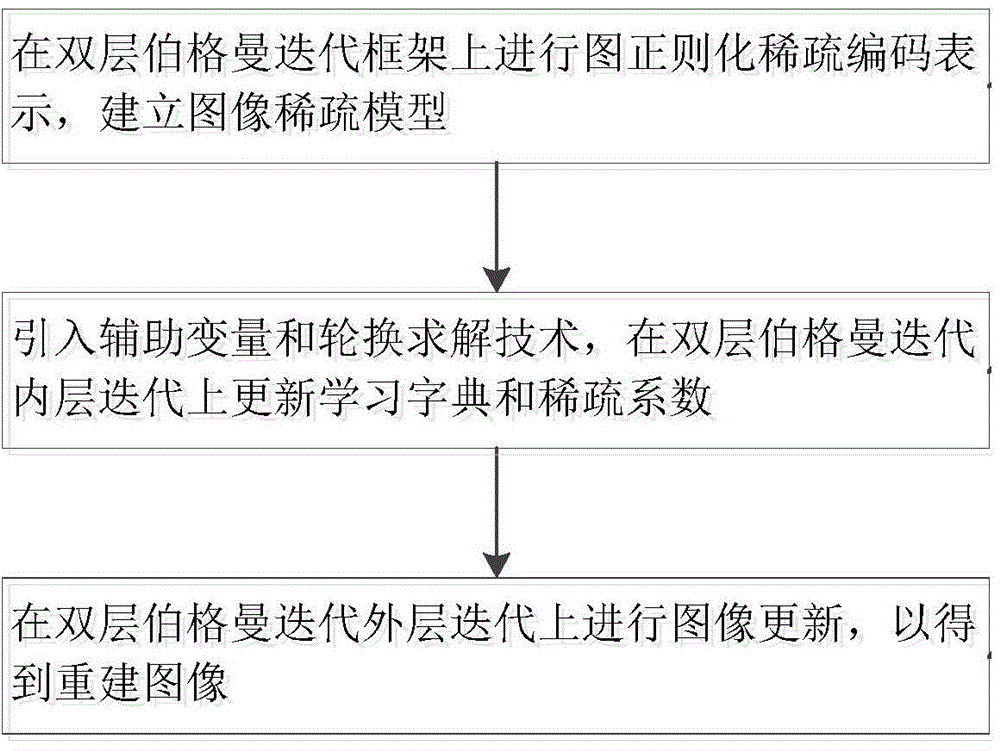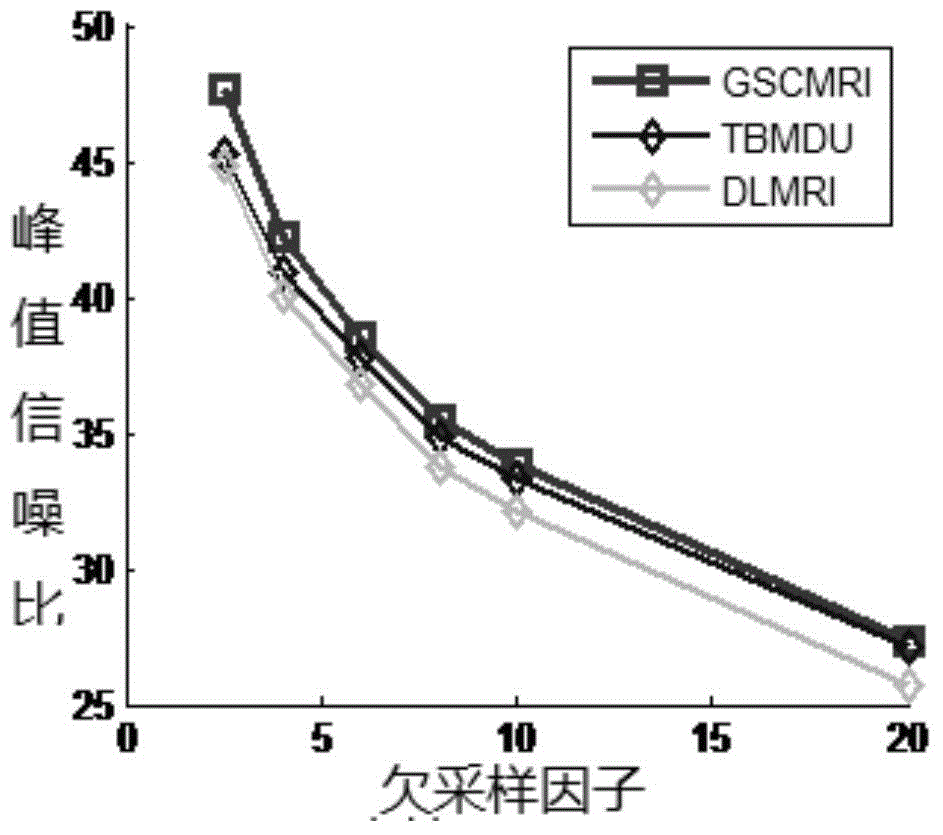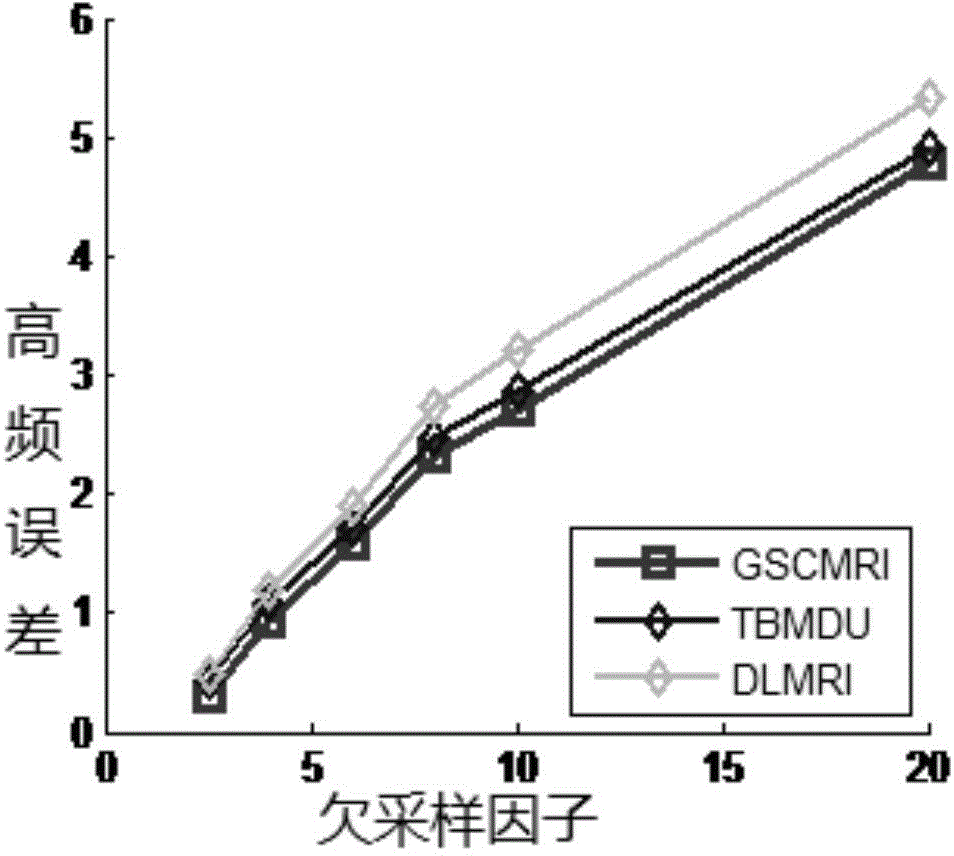Graph regularization sparse coding-based magnetic resonance super-undersampled K data imaging method
An imaging method and sparse coding technology, applied in the field of medical imaging, can solve problems such as image structure that cannot be ideally sparsely represented
- Summary
- Abstract
- Description
- Claims
- Application Information
AI Technical Summary
Problems solved by technology
Method used
Image
Examples
Embodiment Construction
[0065] In order to make the purpose, technical solution and advantages of the present invention more clear, the present invention will be further described in detail below in conjunction with the accompanying drawings and examples of implementation. The specific embodiments described here are only used to explain the technical solution of the present invention, and are not limited to the present invention.
[0066] The invention will be described in more detail hereinafter with reference to the accompanying drawings showing embodiments of the invention.
[0067] According to the method of the present invention, the technical solution of the present invention obtains the final imaging result by means of a graph regularized sparse coding model and incorporating a two-layer Bergman iterative framework. Specifically, the embodiment of the present invention constrains the local geometric structure through graph regularization sparse coding, which can more accurately represent image...
PUM
 Login to View More
Login to View More Abstract
Description
Claims
Application Information
 Login to View More
Login to View More - R&D
- Intellectual Property
- Life Sciences
- Materials
- Tech Scout
- Unparalleled Data Quality
- Higher Quality Content
- 60% Fewer Hallucinations
Browse by: Latest US Patents, China's latest patents, Technical Efficacy Thesaurus, Application Domain, Technology Topic, Popular Technical Reports.
© 2025 PatSnap. All rights reserved.Legal|Privacy policy|Modern Slavery Act Transparency Statement|Sitemap|About US| Contact US: help@patsnap.com



